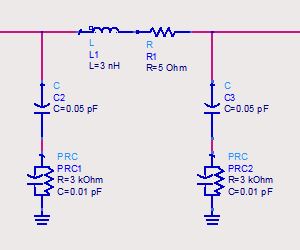happsky
Advanced Member level 4
negative resistance in tranmission line SPICE model
Hi ,
I extrace RLCG using the method propose in "S-Parameter-Based IC Interconnect Transmission Line Characterization"
William R. Eisenstadt, Senior Member, IEEE, and Yungseon Eo
the length of the TL is 500um, in about 60Ghz,the R is come to zero and then to negative. I think negative R is no useful in the SPICE model,What can do ?
And the second quetion is : the R become more and more larger at the beginning ,but why come to small after the largest point ?as show in the picture.How to model this pheonomenon?

Thank in advance!
Hi ,
I extrace RLCG using the method propose in "S-Parameter-Based IC Interconnect Transmission Line Characterization"
William R. Eisenstadt, Senior Member, IEEE, and Yungseon Eo
the length of the TL is 500um, in about 60Ghz,the R is come to zero and then to negative. I think negative R is no useful in the SPICE model,What can do ?
And the second quetion is : the R become more and more larger at the beginning ,but why come to small after the largest point ?as show in the picture.How to model this pheonomenon?

Thank in advance!
Last edited:
